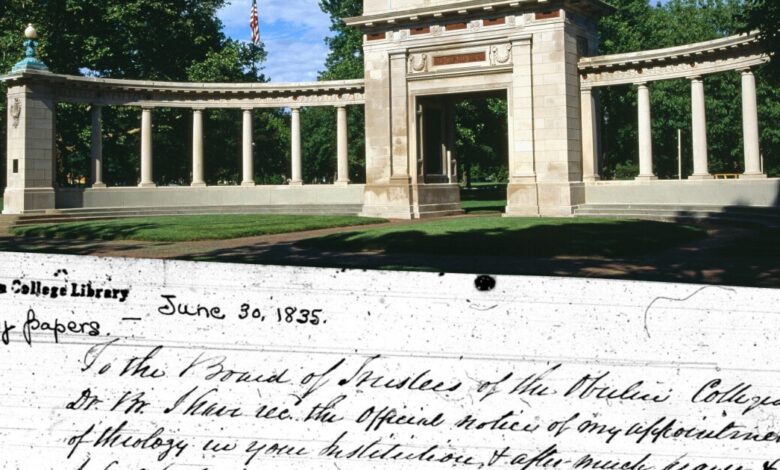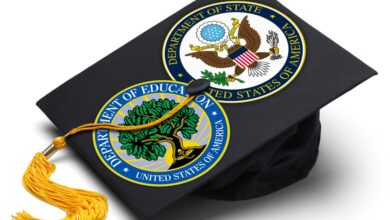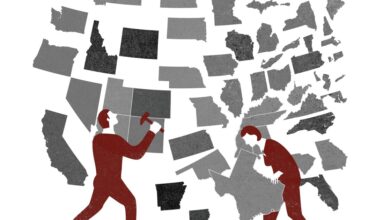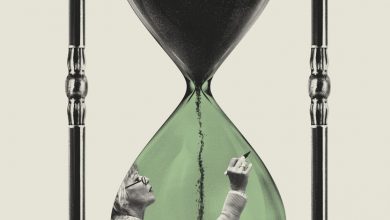At Oberlin, a Bylaw Feud Feels Like a Last Stand for Faculty Power

It’s no wonder that professors at Oberlin College kind of feel as if they run the place. Words to that effect have for decades been written into the bylaws at Oberlin, a small liberal-arts college with a progressive reputation. But a debate is unfolding at the Ohio college about whether Oberlin professors should retain their broad powers or accept a narrower role that is largely confined to education-related matters.
On Friday, Oberlin’s Board of Trustees is expected to vote on several changes in the bylaws, striking from the guiding document a key phrase that entrusts faculty members “with the management of the internal affairs of the college.” The bylaws stipulate that professors require “concurrence” from the board to make some major changes, but as written the document gives the faculty an uncommon level of codified authority. It’s not the kind of power Oberlin professors are eager to surrender.
Reluctantly or gratefully, a lot of college professors today seem to have accepted the idea that vast aspects of the modern higher-education enterprise don’t directly involve them. College presidents often equate their campuses to small municipalities, offering arrays of services beyond classroom instruction: health care, housing, dining, recreation, and security. Those aren’t the kinds of things Oberlin’s trustees probably had in mind in 1903, when the bylaws envisioned that professors would have their hands in just about everything. Still, some Oberlin professors fear, the college appears to be carving out an ever-smaller space in which faculty members can have real influence.
Parochial as it may seem, the skirmish over bylaws at Oberlin fits into a larger story of waning faculty power in higher education, particularly at public universities. Nationally, faculty members see the protections of tenure being ground to dust. Florida’s governor is telling professors what they can’t teach. In that context, a fight by Oberlin’s faculty to retain dominion over an entire college feels antiquated to the point of luxury. It is tantamount to a last stand on territory that others lost a few wars ago.
The unfolding debate at Oberlin comes at a fragile moment for the college. In September, Oberlin said it would pay $36.59 million to Gibson’s Bakery, a local business that said it had been defamed as racist, in 2016, after an employee chased down and tackled a Black student suspected of stealing a bottle of wine. (The student, and two others who were involved, later pleaded guilty to misdemeanor charges.) The lawsuit contended that Oberlin officials had libeled the bakery by assisting protesters after the incident and, for a time, cutting ties with the business.
Concerned about litigation, Oberlin’s trustees hired outside consultants to perform a risk-management assessment. One of the firm’s recommendations, college officials said, was that Oberlin “clarify its governing documents.” (Oberlin did not respond to questions about who had conducted the assessment.)
Oberlin has a long history of debate over the roles and responsibilities of faculty members. The board’s push to amend the bylaws has led some professors to re-examine that history, scanning the college’s archives for evidence that a strong faculty is a founding principle at Oberlin. That’s what recently led Kirk Ormand, a classics professor, to scrutinize a longhand letter written in 1835 by a renowned Oberlin faculty member.
‘A Heavy Blow’ to the College
Like other professors at Oberlin, Ormand received an email on September 21 at 10:30 p.m., directing him to materials for a coming “faculty briefing,” to be held a week later with trustees via Zoom. He followed a link to Blackboard, where a draft of the bylaw changes was posted.
Ormand zeroed in on a consequential change in Article XV, Section 2, which articulates the faculty’s broad powers. Stricken from the text was language that entrusted faculty members “with the management of the internal affairs of the college.” In its place was a narrowed definition of the faculty role, which would be limited to responsibility for “the internal affairs of the college in matters pertaining to educational policy, curriculum, methods of instruction, degree requirements, those aspects of student life that relate to students’ academic experience, and the evaluation of the faculty for appointment, tenure, and promotion.”
A lot could fit under that new umbrella, Ormand said, but a lot might not. Consider the significant role faculty members played in a recent strategic-planning effort. Would that happen again? Ormand wondered: “It would be very easy for a future board to say, ‘You know what, faculty? That’s not your business, because that’s not curricular policy or tenure and promotion.’”
Charles S. Birenbaum, a trustee, told The Oberlin Review, the student newspaper, that the bylaw changes are not meant to limit input from faculty members, some of whom serve on board committees as nonvoting members. The changes are designed to clarify “who has the authority to decide what,” he said.
Another bylaw change that has stuck out to professors would give the president more authority in the hiring of deans. At Oberlin the deans of the college and the music conservatory are chief academic officers, who operate much like provosts in other administrations. Under current rules, Oberlin’s president needs the “advice and concurrence” of a special committee elected by faculty members to nominate a dean for approval. As drafted, the new bylaws would describe “concurrence” as desirable but not essential: The president will “strive to secure concurrence” from a search committee before presenting the nominee to the board for approval.
“You can see in this document,” Ormand said, “a kind of move towards a more hierarchical, top-down, centralized approach to running the college.”
Ormand is a self-described geek for process, the sort of professor who stands up in a faculty meeting and quotes from the bylaws. Of late, he has concerned himself with what is commonly known at Oberlin as the “Finney Compact.” Charles G. Finney was a widely known revivalist preacher who in 1835 was recruited to Oberlin as a theology professor. He agreed to the post on the condition that the board would let the faculty run the institution. Specifically, Finney wanted faculty members empowered to decide whether Oberlin would admit Black students; thanks in part to that condition, the college was among the first to do so.
In a letter dated June 30, 1835, Finney memorialized his agreement with the trustees. The board must agree, Finney wrote, to “give the internal control of the school into the hands of the faculty and leave it to their discretion to admit or select those who in their judgment shall be proper subjects for admission or rejection, irrespective of color.”
Finney would later serve as Oberlin’s president. His conditions for employment relative to faculty powers were added to the bylaws, where they remain.
Warnings about messing with the Finney Compact long predate the present day. James L. Powell, who was Oberlin’s acting president from 1981 to 1983, once told trustees that repealing the agreement would deal “a heavy blow” to Oberlin, and that “things would be worse, not better,” should that come to pass. “Collegiality would be a thing of the past,” he said, “and the life of administrators and faculty made miserable.” (Powell’s remarks were quoted by Geoffrey Blodgett, an Oberlin history professor, in a column on governance that was published in the Oberlin College Observer in 1992. Blodgett died in 2001.)
While there has always been some push and pull at Oberlin over the powers of professors, faculty members who spoke with The Chronicle do not dispute that the trustees have the authority to change the bylaws. The issue is whether it’s wise to do so.
A Question of Oberlin Values
Oberlin trustees say they have been concerned for years about the bylaws, but serious discussions began only this past summer.
Lillie J. Edwards, a board member and Oberlin alumna, recently told the Review: “The current bylaws align neither with how we operate nor with the structures and demands of higher education in the 21st century. … The current bylaws do not reflect the ways the external world views institutional responsibility. They are messy and misaligned. The bylaws revision provides clarity and alignment.”
Edwards, a professor emerita of history and African American studies at Drew University, has also said that ambiguity in the bylaws about decision-making responsibilities indicates that they are “not aligned” with criteria set by the Higher Learning Commission, Oberlin’s regional accrediting agency. That may be. But a college spokesman said that the agency had not identified the current bylaws as a problem.
“In practice, Oberlin’s Board of Trustees has delegated authority to the administration and faculty in accordance with HLC’s criteria for accreditation,” Josh Jensen, the spokesman, wrote in an email to The Chronicle. “Because Oberlin has been able to provide evidence of this practice as part of past reaccreditation processes, HLC has not identified this as a barrier to accreditation. The changes to the bylaws simply clarify ambiguity in the bylaws to bring them into line with both HLC accreditation criteria and the board’s longstanding practices.”
(Edwards said she was unavailable for an interview.)
Further explaining the board’s rationale, Birenbaum, the trustee, said that the board is concerned about lawsuits, including the big payout in the Gibson case. “All these claims demonstrated that Oberlin needed to take a hard look at itself in some ways that it hasn’t before,” Birenbaum, who is a lawyer and an Oberlin alumnus, told the Review.
(Birenbaum did not respond to an email from The Chronicle on Thursday asking him to expand on how the bylaw changes would mitigate litigation risks.)
Ellen E. Chaffee, a college-governance consultant, reviewed Oberlin’s bylaws and the trustees’ proposed changes at The Chronicle’s request. “Oberlin does appear to be an outlier in terms of faculty roles,” she wrote in an email. “The revisions appear to be in line with common practice. ‘Common’ and ‘best’ are not necessarily synonyms in this case. Institutional mission and culture can accommodate a range of effective solutions.”
That said, it could be in the board’s interest to allow further faculty input into the changes, said Chaffee, a former president of Valley City State University and Mayville State University, both in North Dakota. “When changes that can be seen as adverse are on the table,” Chaffee wrote, “it can be well worth additional time and communication to build/preserve trust.”
Months before the proposed bylaw changes were revealed, faculty members were aware something was brewing. But only a few professors knew the specifics.
Over the course of seven meetings, which were held via Zoom at 7 a.m. on Fridays, the board’s Nominations and Governance Committee discussed the proposals with the General Faculty Council, whose members include six elected faculty members. (Some trustees, who live on the West Coast, were tuning in at 4 a.m. their time.)
Two professors who attended those meetings spoke with The Chronicle. Both said that the trustees appeared genuinely interested in their feedback. But neither left the process entirely enthusiastic about the proposed changes. Jan Miyake, an associate professor of music theory, said that the discussions reflected the different philosophies of board members and faculty members.
“There are a lot of lawyers and there are a lot of business people represented there,” she said. “And so their view on what’s best for the college certainly differs from a faculty point of view. I definitely appreciated being invited to be in the room to provide a faculty point of view. And sometimes it made a difference, and sometimes it didn’t. And of course, we’re very stuck on the things where it didn’t make a difference.”
The professors were sworn to secrecy about the discussions with the board. It was “incredibly stressful” to be involved in such weighty deliberations and not be able to talk about them, said Angela J. Roles, an associate professor of biology. Intuitively, Roles said, she can appreciate that professors don’t want to or should not “manage” many aspects of the college. But she described a conflict between her head and her heart: “My immediate heart response is, ‘Hell yes,’” the changes will disempower the faculty. “But actually, when I think about it, I think it’s a little harder to know.”
The bylaws, flawed as they may be, are a value statement. They say something about Oberlin’s identity, staking out an idea about the centrality of faculty power in all things that is perhaps aspirational or nostalgic. It is not unusual for Oberlin to be a little unusual — a little idealist. It’s the kind of college that, professors say, is more likely to attract the editor of an underground student newspaper than the president of a student council. That outsider ethos is part of the college’s DNA, said Gary J. Kornblith, an emeritus professor of history at Oberlin.
“This was meant to be a place that was doing something other than what was going on in the mainstream culture,” he said. “That’s part of what has made it special.” (Kornblith is co-author, with the emerita history professor Carol Lasser, of Elusive Utopia: The Struggle for Racial Equality in Oberlin, Ohio.)
As has happened before, Oberlin is tangling with whether the idea of the college — a place that does things differently and chafes at corporatization — can withstand the pressures of contemporary higher education. At the same time, a lot has changed since the 1830s, when a revivalist preacher demanded that Oberlin’s board butt out and let faculty members run the show. Roles, the associate professor, said that maybe more had changed than people care to admit: “When people complain about, ‘Oh the Finney Compact, the Finney Compact,’ I feel like they’re crying over milk that spilled 50 years ago.”
Source link






